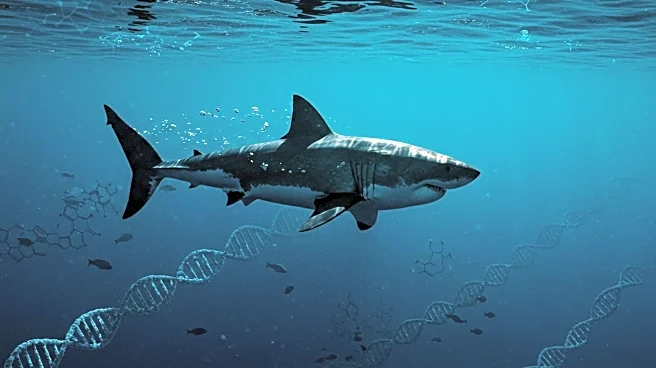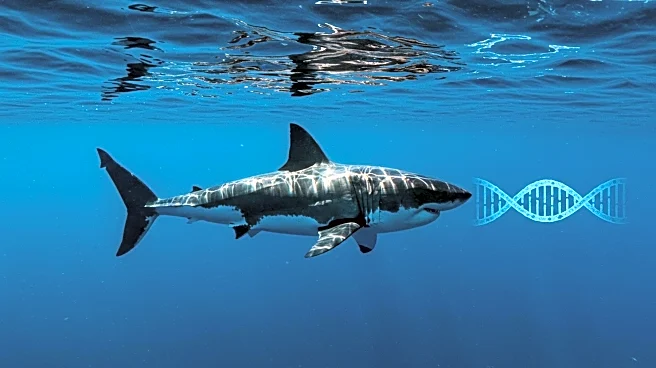What is the story about?
What's Happening?
A recent study has revealed a perplexing DNA mystery in great white sharks, challenging previous migration theories. Researchers have discovered significant differences between the nuclear and mitochondrial DNA of these sharks, which were previously attributed to their migration patterns. The study, published in the Proceedings of the National Academy of Sciences, analyzed genetic differences among global white shark populations. It found that at the end of the last ice age, about 10,000 years ago, great whites were confined to a single population in the Indo-Pacific Ocean. As the ice melted and sea levels rose, these sharks expanded globally, leading to genetic divergence. Despite using a large genetic dataset, the study could not confirm the migration theory, leaving the DNA discordance unexplained.
Why It's Important?
This discovery is significant as it challenges long-held beliefs about the migration and genetic patterns of great white sharks, which are crucial for understanding their conservation needs. The findings suggest that previous assumptions about shark migration and genetic diversity may need reevaluation, potentially impacting conservation strategies. With only about 20,000 individuals globally, understanding the genetic makeup and behavior of these apex predators is vital for their survival. The study highlights the complexity of marine ecosystems and the need for further research to uncover the evolutionary forces shaping these species.
What's Next?
Further research is needed to explore alternative explanations for the DNA differences observed in great white sharks. Scientists may investigate other evolutionary forces, such as natural selection or genetic drift, to account for the observed genetic patterns. The study's findings could prompt a reevaluation of conservation strategies, focusing on preserving genetic diversity and understanding the ecological roles of these sharks. Continued research may also involve more extensive genetic sampling and advanced analytical techniques to uncover the underlying causes of the DNA mystery.
Beyond the Headlines
The study raises questions about the broader implications of genetic research in marine species. It highlights the challenges of studying elusive and endangered species like great white sharks, where obtaining genetic samples is difficult. The findings also underscore the importance of interdisciplinary collaboration in addressing complex ecological questions. As scientists continue to explore the genetic mysteries of marine life, ethical considerations regarding conservation and the impact of human activities on these ecosystems may come to the forefront.
AI Generated Content
Do you find this article useful?











